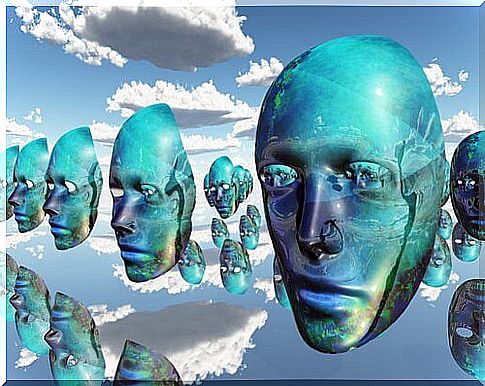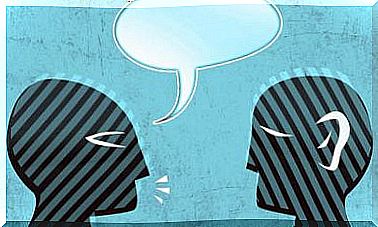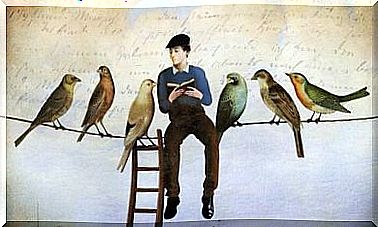In The End, Things Are Not Always What They Seem

Things are not always what they seem. People, situations and certain events can end up being something very different from what we had interpreted. Something like this shows us that not all our judgments are correct or our assumptions correct. However, the mind has an irreparable habit: that of rushing.
Taking on these “perceptual miscalculations” is an act of responsibility. However, it should be noted that not all responsibility is ours; not at least consciously. Because the real culprit for these out-of-tune performances is the brain, who makes decisions on automatic pilot, who chooses to be carried away by prejudice rather than delicate reflection.
Something that those of us who dedicate our lives in one way or another to mental health know well is that it is essential to know how to turn off the switch of judgment and the trap of prejudice. If we want to be agents of change for others, to help them grow and heal, it is essential to avoid hasty labels and to turn on the light of understanding.
Only the open mind, capable of seeing with authenticity, can connect with empathy to be able to accompany, to be able to facilitate the progress that the person needs. Because in the end, experience ends up showing us that not all things are always what they seem at first, nor does everything they tell us end up being true.
This undoubtedly plunges us into a state of continuous uncertainty where we only have one option: to let ourselves go and allow ourselves to discover each other. In fact, that is the secret of life, in daring to go through doors to discover what is behind it, in assuming that there are as many realities and perspectives as there are stars in the sky.

Things are not always what they seem (the hasty mind)
Sometimes what one perceives has nothing to do with the true reality. How can this be? Is it that our senses deceive us? Not at all, what happens is that everything we perceive, everything that is outside the mind passes through the filter of our brain. It is he who interprets everything we see and experience, who channels each event, person and circumstance through the veil of our experience, personality and unique nuances.
Things are not always what they seem, and when we discover that they are not, we are surprised. It has happened to all of us at some time. For example, when we come across a case of bullying, it is very easy to perceive who is the victim and who is the aggressor. However, the perception should go further. Because sometimes the aggressor is also a victim, a victim of his social and family context, of that microworld where violence is the only type of language.
What we perceive, indeed, is not always the true reality, but perception is that lens from which we look at the world almost every day. The glass from which it is made, far from being clear and transparent, has the tonality of our previous experiences, emotions, prejudices, interests and cognitive distortions …
Let’s dig a little deeper.
Things are not always what they seem because the mind is a factory of assumptions
Our mind has embedded within it a vast industrial estate of assumptions, irrational schemes, preconceptions and prejudices of which we are not aware. If we ask ourselves who has put them there, the answer is simple: oneself.
Daniel Kahneman, the well-known psychologist who received the Nobel Prize in economics in 2002, reminds us in his books and works that people are made of hundreds of cognitive biases. That is, of subjective (and often erroneous) ways of interpreting reality that deviate completely from objective reality.
Hence, sooner or later we realize that certain things are not as they seem at first. And they are not because we have made use of completely misaligned biases.

A brain that wants to save time and that fills in prejudices what it does not understand
The brain often works on automatic pilot and making use of cognitive blind spots. These are situations in which, far from empathizing with other people’s perspectives, limiting ourselves only to attending, seeing and listening calmly and closely to those in front of us, we limit ourselves once again to judging hastily.
We do not give time or space, nor do we give the other something even more precious: understanding. We get stuck once again in that cognitive blind spot where one is not aware of their biases, their unfounded ideas, their misinterpretations. Sometimes it takes days or weeks to realize that certain things are not always what they seem.
Forbidden to anticipate, allowed to open the mind
Every time we talk to someone, when we are faced with a new or difficult situation, we try to carry out a simple visualization exercise. One where two very specific images are captured in the mind. In the first, we will be turning off a switch (that of prejudices or thoughts anticipating nonsensical interpretations).
The second image is simple: ourselves opening a window. That great window is our mind, bright, immense and connected to all the wonders that surround it. That feeling should inject us with a good dose of curiosity, perspective, and positive encouragement.
This is how we can be much more receptive to others to understand them with all their nuances, having previously turned off the voice of the label, of the assumptions, etc. This mental focus requires effort and commitment and also implies freeing ourselves from the overweight of those judgments that help us so little when it comes to understanding each other.









